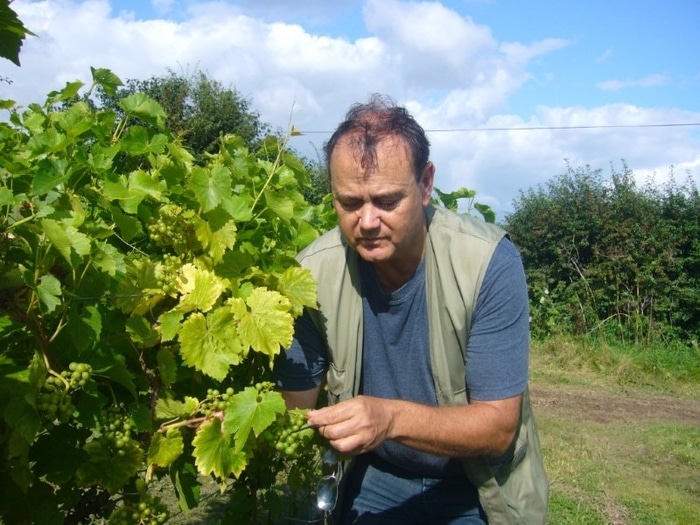Tailor agronomy to potential grape yield – Vineyard – Rob Saunders, Chris Cooper
Accurately assessing yield potential after fruit set helps fine-tune inputs and vine agronomy over the summer months, as Hutchinsons’ Rob Saunders and Chris Cooper explain ...
Maintaining a healthy canopy that maximises light interception and supports the bunches through to ripening and harvest is key to the success of any vineyard.
Many factors determine the size of crop that can be carried through to the season end, with a degree of subjectivity surrounding any estimates. It is useful to accurately assess how crops might perform so that nutritional inputs and canopy management can be tailored appropriately.
Bunch counts in late June or early July are a starting point. This information should be combined with an assessment of vine vigour and a prediction of how early the crops will ripen to determine what crop load can be carried through to harvest.

Chris Cooper
A strong primary bud can potentially support up to three bunches, but whether they ripen in time to meet the juice parameters, primarily the sugar and acidity levels required by winemakers, is very dependent on the weather.
Predicting weather months ahead is impossible, so experience, attitudes to risk, agronomy and target markets have key roles in the decisions taken.
Growers often choose to supplement nutrition to support crops with a high yield potential, aiming to ripen two bunches per shoot. If not done well this can lead to underwhelming flavour characters. Bunch or shoot thinning may be required where fruit set has been particularly strong and growers feel it is unlikely that large crops will ripen sufficiently.

Rob Saunders
Thinning from 10 to six or eight shoots per vine shortly after flowering fits well with the “gentle pruning” principles promoted by Simonit&Sirch and helps to reduce some of the winter workload, but decisions on which to retain with so much foliage can be challenging. Pruning cuts of young, fleshy shoots heal quickly, reducing the risk of disease infection, while decongesting the canopy improves airflow and light penetration.
Remaining shoots should all serve a function, either for carrying this season’s crop, or as potential candidates to lay down for next year.
Managing canopies
As a general rule of thumb, 12-15 healthy leaves are required to support each bunch, and the canopy must be well managed by tucking and trimming to support yield potential, allow ripening, minimise disease risk and build strong canes for next season.
Generally, it is difficult for light to penetrate beyond three leaf layers, so additional layers are unlikely to contribute anything other than increased disease risk. Extra foliage is sometimes required around bunches of cultivars such as Bacchus to prevent sun-scorch.
Leaf area can be maintained manually or mechanically to support yield, but take care to avoid bruising grapes with mechanical operations by ensuring machines are set up properly.
There is some evidence to show calcium applied pre-flowering can improve cell structure and give more robust grape skins, while boron is also important for vine growth, fruit set and quality.
Biostimulant applications of products such as Crop Biolife (CBL), are fairly routine for many growers, with three distinct timings at just before flowering, then two further applications at intervals of 28-30 days. This is often supported with seaweed extract products, such as the Maxicrop range, to stimulate healthy growth and keep canopies performing through the main growing period.
Later in the season, focus switches more towards tailoring foliar nutrition, such as potassium, to improve grape quality.
Frost damage limitation
For sites where fruit set has been significantly reduced by late spring frosts, summer agronomy is primarily “damage limitation” to build a strong, healthy vine structure for next season.
It is generally better to select a few canes to grow on through the summer to concentrate the vine’s energy into building strong growth for next year, rather than dissipating vigour across multiple canes, some of which will be pruned out later.
Remove canes that are weak or too vigorous and use internodal distance as a guide, with ideally 10-15cm (4-6”) between nodes. Leave at least six canes with a view to returning in November to select the fruiting canes and spurs for next season.
Frost damage may pose more fundamental questions about the site location or management aspects, so consider if there is anything that can be changed to mitigate future risk.